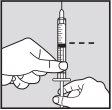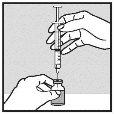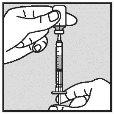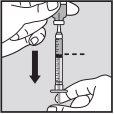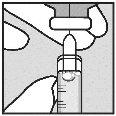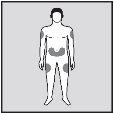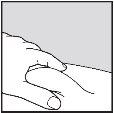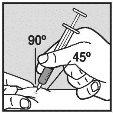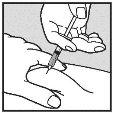
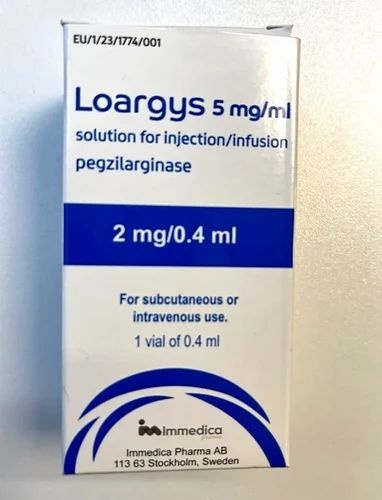
LOARGYS 5 mg/ml SOLUÇÃO INJETÁVEL E PARA PERFUSÃO

Pergunte a um médico sobre a prescrição de LOARGYS 5 mg/ml SOLUÇÃO INJETÁVEL E PARA PERFUSÃO

Como usar LOARGYS 5 mg/ml SOLUÇÃO INJETÁVEL E PARA PERFUSÃO
Introdução
Prospecto: informação para o paciente
Loargys 5 mg/ml solução injetável e para perfusão
pegzilarginasa
Este medicamento está sujeito a acompanhamento adicional, o que agilizará a detecção de nova informação sobre sua segurança. Pode contribuir comunicando os efeitos adversos que possa ter. A parte final da seção 4 inclui informação sobre como comunicar esses efeitos adversos.
Leia todo o prospecto atentamente antes de começar a tomar este medicamento, porque contém informação importante para si.
- Conserva este prospecto, porque pode ter que voltar a lê-lo.
- Se tiver alguma dúvida, consulte o seu médico ou enfermeiro.
- Se experimentar efeitos adversos, consulte o seu médico ou enfermeiro, mesmo que se trate de efeitos adversos que não aparecem neste prospecto. Ver seção 4.
Conteúdo do prospecto
- O que é Loargys e para que é utilizado
- O que precisa saber antes de começar a tomar Loargys
- Como se administra Loargys
- Efeitos adversos possíveis
- Conservação de Loargys
- Conteúdo do envase e informação adicional
- Instruções de uso
1. O que é Loargys e para que é utilizado
Loargys contém o princípio ativo pegzilarginasa, que é uma enzima humana modificada produzida pela tecnologia do ADN recombinante. O medicamento é utilizado para tratar a deficiência de arginase 1 (ARG1-D), também conhecida como hiperargininemia, em adultos, adolescentes e crianças a partir de 2 anos de idade.
Os pacientes com ARG1-D apresentam níveis baixos de uma enzima denominada arginase. Esta enzima ajuda o organismo a controlar os níveis de arginina, um aminoácido que o organismo precisa para produzir proteínas. Se a arginina não for controlada, pode acumular-se no corpo e causar sintomas, como problemas com o controle muscular.
Loargys é utilizado em combinação com outras formas de tratar a doença. Entre elas podem destacar-se:
- uma dieta baixa em proteínas
- complementos alimentícios com aminoácidos essenciais
- medicamentos para tratar outros sintomas da doença, como medicamentos que reduzem os níveis de amônia no organismo.
Como age Loargys
A pegzilarginasa, o princípio ativo de Loargys, age de forma semelhante à enzima natural arginase, que falta ou não funciona corretamente nos pacientes com ARG1-D. Isso reduz os níveis de arginina no sangue, reduzindo assim os sintomas da doença.
2. O que precisa saber antes de começar a tomar Loargys
Não deve receber Loargys
- se teve uma reação alérgica grave à pegzilarginasa ou a qualquer um dos outros componentes deste medicamento (enumerados na seção 6).
Advertências e precauções
Loargys pode provocar reações alérgicas. É mais provável que isso ocorra após as primeiras doses.
Suspenda a injeção imediatamente e entre em contato com o seu médico ou com o serviço de urgências se experimentar qualquer um dos seguintes sintomas de uma reação alérgica grave: urticária, coceira generalizada, opressão no peito, dificuldade para respirar ou tensão arterial baixa. É possível que o seu médico decida que precisa de tratamento médico adicional para prevenir ou tratar uma reação alérgica.
Durante o seu tratamento, o seu médico realizará uma análise de sangue para comprovar qual dose de Loargys é adequada para si.
Crianças e adolescentes
O medicamento não deve ser utilizado em crianças menores de 2 anos, pois não se sabe se Loargys é seguro e eficaz nesse grupo de idade.
Uso de Loargys com outros medicamentos
Informa ao seu médico se está tomando, tomou recentemente ou pode ter que tomar qualquer outro medicamento.
Gravidez, lactação e fertilidade
Se está grávida ou em período de lactação, acha que pode estar grávida ou tem intenção de ficar grávida, consulte o seu médico antes de utilizar este medicamento. Não se recomenda o uso de Loargys se está grávida.
Não se sabe se o medicamento passa para o leite materno. Se está em período de lactação, consulte o seu médico antes de tomar este medicamento. O seu médico o ajudará a decidir se deve interromper a lactação ou interromper o tratamento.
Condução e uso de máquinas
A influência de Loargys sobre a capacidade para conduzir e utilizar máquinas é nula ou insignificante.
Loargys contém sódio e potássio
Este medicamento contém menos de 1 mmol de sódio (23 mg) por dose; isto é, é essencialmente «exento de sódio». Este medicamento contém potássio, menos de 1 mmol (39 mg) por dose, ou seja, é essencialmente «exento de potássio».
3. Como se administra Loargys
Loargys será administrado por um profissional de saúde. O seu médico decidirá a quantidade de Loargys que se lhe administra.
A dose inicial recomendada de Loargys é de 0,1 mg por quilograma de peso corporal, administrada uma vez por semana. O seu médico pode aumentar ou diminuir a dose para manter os níveis de arginina no sangue sob controle. O seu médico prescreverá análises de sangue periódicas para comprovar os níveis de arginina no sangue e mudar a dose se necessário.
Loargys é administrado mediante perfusão (gotejamento) diretamente em uma veia ou mediante injeção subcutânea, conforme o seu médico considere apropriado.
É possível que o seu médico decida que pode administrar-se Loargys em casa, em forma de injeção subcutânea. Após receber a formação do médico ou do enfermeiro, pode injetar Loargys você mesmo (ver as instruções na seção 7).
Utilize sempre este medicamento exatamente como se descreve no presente prospecto ou como o seu médico, farmacêutico ou enfermeiro indicou. Em caso de dúvida, consulte o seu médico, farmacêutico ou enfermeiro.
Se receber mais Loargys do que deve
O seu médico se assegurará de que você recebe a quantidade adequada de Loargys. Se lhe foi administrada demasiada Loargys, o nível de arginina no sangue pode chegar a ser demasiado baixo. Os sintomas podem incluir náuseas, vómitos, diarreia e cansaço. Se você ou o seu médico suspeitam que lhe foi administrada mais quantidade de Loargys do que deveria, deve ser objeto de um acompanhamento estreito e receber o tratamento necessário.
Se esquecer de utilizar «Loargys»
Se esqueceu de uma dose de Loargys, entre em contato com o seu médico para programar a próxima dose o mais rápido possível. Não se lhe deve administrar uma dose dupla para compensar as doses esquecidas e devem transcorrer pelo menos 4 dias entre as doses.
Se interromper o tratamento com Loargys
O seu médico decidirá se deve deixar de utilizar Loargys. Se interromper o tratamento com Loargys, é provável que o nível de arginina no sangue volte a aumentar.
Se tiver alguma outra dúvida sobre o uso deste medicamento, pergunte ao seu médico ou enfermeiro.
4. Efeitos adversos possíveis
Assim como todos os medicamentos, este medicamento pode produzir efeitos adversos, embora não todas as pessoas os sofram.
Muito frequentes(podem afetar mais de 1 de cada 10 pessoas)
- Reação na zona de injeção. Os sintomas podem incluir dor, inchaço, irritação, vermelhidão e erupção cutânea ao redor do local da injeção.
- Reação alérgica (hipersensibilidade) Os sintomas podem incluir inchaço da face, erupção cutânea e vermelhidão repentina da pele (rubor).
Comunicação de efeitos adversos
Se experimentar qualquer tipo de efeito adverso, consulte o seu médico ou enfermeiro, mesmo que se trate de efeitos adversos que não aparecem neste prospecto. Também pode comunicá-los diretamente através do sistema nacional de notificação incluído no Apêndice V. Mediante a comunicação de efeitos adversos, você pode contribuir para fornecer mais informação sobre a segurança deste medicamento.
5. Conservação de Loargys
Mantenha este medicamento fora da vista e do alcance das crianças.
Não utilize este medicamento após a data de validade que figura na etiqueta. A data de validade é o último dia do mês que se indica.
Conservar em frigorífico (entre 2 °C e 8 °C). Não congelar. Conservar no embalagem original para protegê-lo da luz.
Uma vez extraído do frigorífico, Loargys pode ser conservado durante 2 horas a temperatura ambiente não superior a 25 °C.
Os medicamentos não devem ser jogados nos deságues ou na lixeira. Dessa forma, ajudará a proteger o meio ambiente.
6. Conteúdo do envase e informação adicional
Composição de Loargys
- O princípio ativo é a pegzilarginase.
- Cada frasco de 0,4 ml contém 2 mg de pegzilarginase.
- Cada frasco de 1 ml contém 5 mg de pegzilarginase.
- Os outros ingredientes são o cloreto de sódio, o dihidrogenofosfato potássico, o fosfato dipotássico, o glicerol, o ácido clorídrico, o hidróxido de sódio e a água para injeções. Loargys contém sódio e potássio (ver seção 2).
Aspecto do produto e conteúdo do envase
Loargys é um líquido incolor a ligeiramente amarelo ou ligeiramente rosa, claro a ligeiramente opalescente, em um frasco de vidro transparente.
Cada envase contém 1 frasco com 0,4 ml ou 1 ml de solução para injeção/perfusão.
Pode ser que apenas alguns tamanhos de envases estejam sendo comercializados.
Título da autorização de comercialização e responsável pela fabricação
Immedica Pharma AB
113 63 Estocolmo
Suécia
Responsável pela fabricação
Unimedic AB
Storjordenvägen 2
864 31 Matfors
Suécia
Data da última revisão deste prospecto
Este medicamento foi autorizado em «circunstâncias excepcionais». Esta modalidade de aprovação significa que devido à rareza desta doença não foi possível obter informações completas sobre este medicamento.
A Agência Europeia de Medicamentos reverá anualmente as novas informações sobre este medicamento que possam estar disponíveis e este prospecto será atualizado quando necessário.
Outras fontes de informação
A informação detalhada sobre este medicamento está disponível no site da Agência Europeia de Medicamentos: . Também existem links para outros sites sobre doenças raras e medicamentos órfãos.
No site da Agência Europeia de Medicamentos, pode encontrar este prospecto em todas as línguas da União Europeia/Espaço Econômico Europeu.
Pode encontrar também este prospecto e o material de formação aprovado pelas autoridades sanitárias sobre este medicamento ao escanear o código QR que figura a seguir com um telefone inteligente ou através do site http://www.loargyspatient.eu

- Instruções de uso
Nos passos que seguem, descreve-se como preparar e administrar Loargys em casa, como injeção subcutânea. Se for injetar este medicamento você mesmo, seu médico ou enfermeiro lhe ensinará como preparar e injetar Loargys.
Não injete este medicamento você mesmo a menos que tenha recebido formação e entenda os passos que deve seguir.
Seu médico prescreverá a dose correta e dirá qual volume (em ml) deve injetar. É possível que precise de mais de um frasco para obter a dose correta e é possível que precise dividir a dose total em mais de uma injeção. Seu médico ou enfermeiro lhe indicará exatamente o que é correto para você.
Cada frasco é para um único uso, use sempre frasco(s) novo(s) para cada dose.
Loargys não deve ser misturado com outras soluções para injeção ou perfusão.
Não agite.
Preparação:
Certifique-se de que tem tudo o que precisa para a injeção ou injeções:
- Frasco(s) de Loargys
- Uma seringa graduada
- 1 agulha grande (p. ex., calibre 18) por frasco, para extrair a dose
- 1 agulha pequena (p. ex., calibre 26-27) por injeção
- Compressas de álcool
- Compressa de gaze
- Adesivo, se necessário
- Contenedor para objetos pontiagudos
|
|
|
|
|
|
Retirada da solução do frasco:
| |
|
|
|
|
| |
|
|
|
|
| |
| |
| |
Nota: se a solução não for usada imediatamente, proteja a seringa da luz. Após sua preparação, Loargys pode ser conservado a temperatura ambiente (até 25 °C) durante um máximo de 2 horas antes de sua administração. Após esse tempo, o Loargys preparado não pode mais ser usado e deve ser descartado. |
Administração da dose:
Verifique visualmente que o volume contido na seringa é correto. O volume por injeção não deve superar 1 ml. Se for necessário, devem ser injetadas múltiplas injeções em diferentes locais. | |
Não injete no tecido cicatricial ou em zonas enrubescidas, inflamadas ou inchadas. Se injetar no abdomen, evite a zona que rodeia diretamente o umbigo. Se precisar de mais de 1 injeção para uma dose única de Loargys, os locais de injeção devem estar separados entre si por pelo menos 3 cm. |
|
| |
|
|
|
|
Alterne o ponto de injeção e certifique-se de que o novo ponto de injeção está a mais de 3 cm de distância. Pressione lentamente o êmbolo até que tenha injetado o volume necessário. Repita até que tenha injetado sua dose total (em ml). Use sempre uma agulha pequena nova para cada injeção.Lembrete:se precisar injetar um volume superior a 1 ml de Loargys, |
|
| |
|
Leve em mente a data da injeção e todos os locais em que foi injetado, isso o ajudará a usar um local de injeção diferente para a próxima injeção.
--------------------------------------------------------------------------------------------------------------------
Esta informação é destinada apenas a profissionais de saúde:
Loargys é indicado para a perfusão intravenosa ou a injeção subcutânea.
Use uma técnica asséptica ao preparar e administrar Loargys.
Não agite.
Instruções para a preparação
- Determine o volume total de Loargys que será administrado (e o número de frascos necessários) com base no peso e no nível de dose do paciente.
- Retire o(s) frasco(s) da geladeira para que atinjam a temperatura ambiente.
- Antes da administração, inspecione visualmente o frasco para detectar a presença de partículas e a decoloração.
- Loargys é um líquido incolor a ligeiramente amarelo ou ligeiramente rosa, claro a ligeiramente opalescente, essencialmente isento de partículas estranhas visíveis.
- Descarte qualquer frasco que não seja coerente com esta aparência.
- Extraia a dose prevista na seringa.
- Foi demonstrada a estabilidade química e física da dose preparada durante 2 horas quando armazenada a temperatura ambiente de até 25 °C ou até 4 horas se conservada refrigerada a entre 2 °C e 8 °C. Se o produto não for usado dentro desses marcos temporais, deve ser descartado. Do ponto de vista microbiológico, o produto deve ser usado imediatamente após a reconstituição.
Para administração intravenosa
- Dilua com cloreto de sódio 9 mg/ml (0,9%) solução injetável para obter o volume desejado de perfusão (concentração máxima de pegzilarginase de 0,5 mg/ml).
- Administre a perfusão intravenosa durante pelo menos 30 minutos.
- Não misture outros medicamentos com Loargys nem infunda outros medicamentos simultaneamente através da mesma linha de acesso intravenoso.
Para administração subcutânea
- Administre a solução sem diluir mediante injeção subcutânea no abdomen, na parte lateral do quadril ou na parte lateral ou posterior dos braços. Alterne os locais de injeção entre as doses.
- Não injete no tecido cicatricial ou em zonas enrubescidas, inflamadas ou inchadas.
- Se injetar no abdomen, evite a zona que rodeia diretamente o umbigo.
- Se precisar de mais de 1 injeção para administrar uma dose única de Loargys, os locais de injeção devem estar separados entre si por pelo menos 3 cm.
Descarte a porção não utilizada do medicamento.
Não são necessários requisitos especiais de eliminação.
- País de registo
- Substância ativa
- Requer receita médicaSim
- Fabricante
- Esta informação é apenas para referência e não constitui aconselhamento médico. Consulte sempre um médico antes de tomar qualquer medicamento. A Oladoctor não se responsabiliza por decisões médicas baseadas neste conteúdo.
- Alternativas a LOARGYS 5 mg/ml SOLUÇÃO INJETÁVEL E PARA PERFUSÃOForma farmacêutica: SOLUÇÃO INJETÁVEL PARA PERFUSÃO, 100 USubstância ativa: laronidaseFabricante: Sanofi B.V.Requer receita médicaForma farmacêutica: PERFURAÇÃO INJETÁVEL, 30 mg/mlSubstância ativa: cerliponase alfaFabricante: Biomarin International LimitedRequer receita médicaForma farmacêutica: PERFURAÇÃO INJETÁVEL, DesconhecidaSubstância ativa: imigluceraseFabricante: Sanofi B.V.Requer receita médica
Médicos online para LOARGYS 5 mg/ml SOLUÇÃO INJETÁVEL E PARA PERFUSÃO
Avaliação de posologia, efeitos secundários, interações, contraindicações e renovação da receita de LOARGYS 5 mg/ml SOLUÇÃO INJETÁVEL E PARA PERFUSÃO – sujeita a avaliação médica e regras locais.




